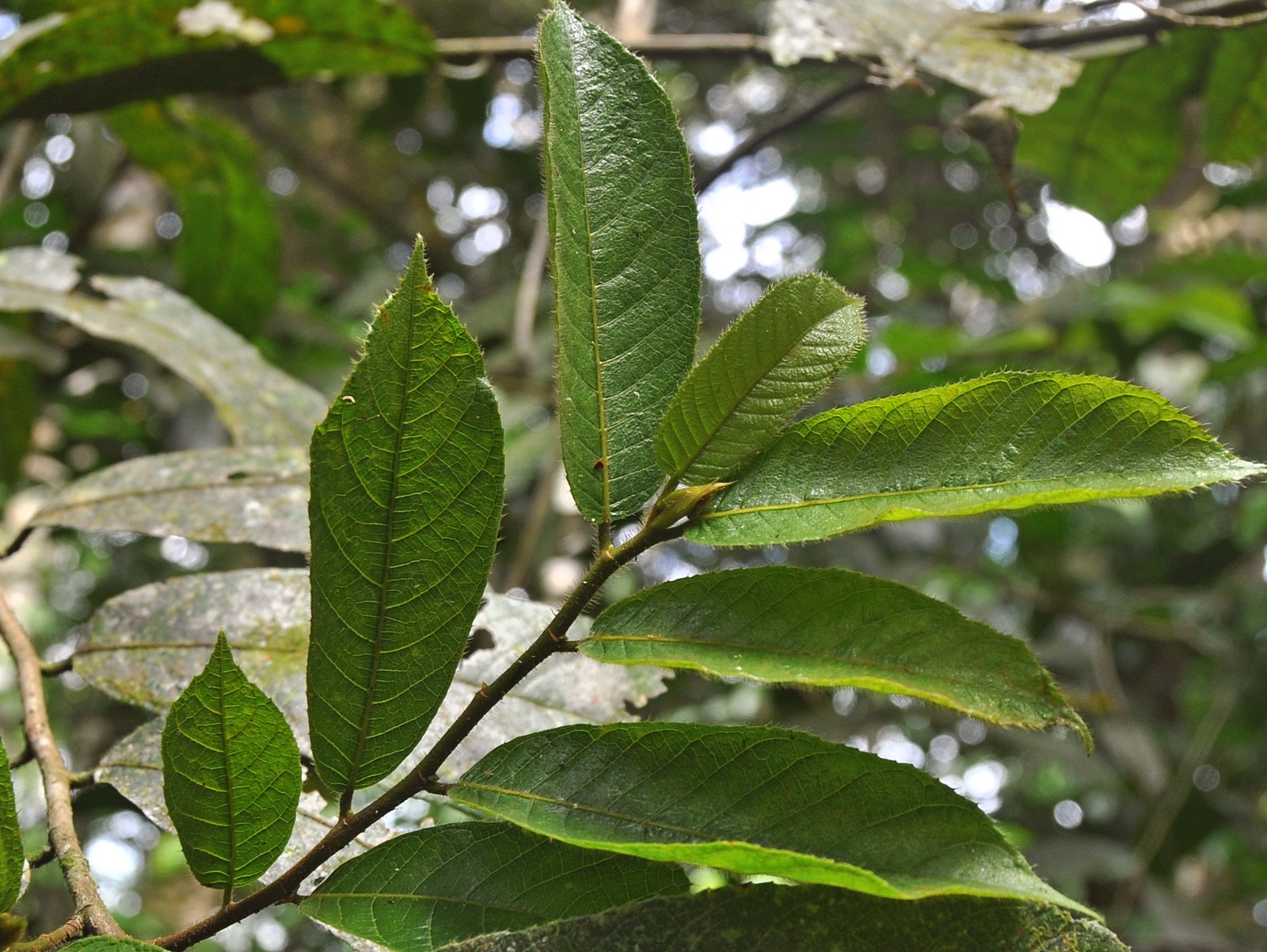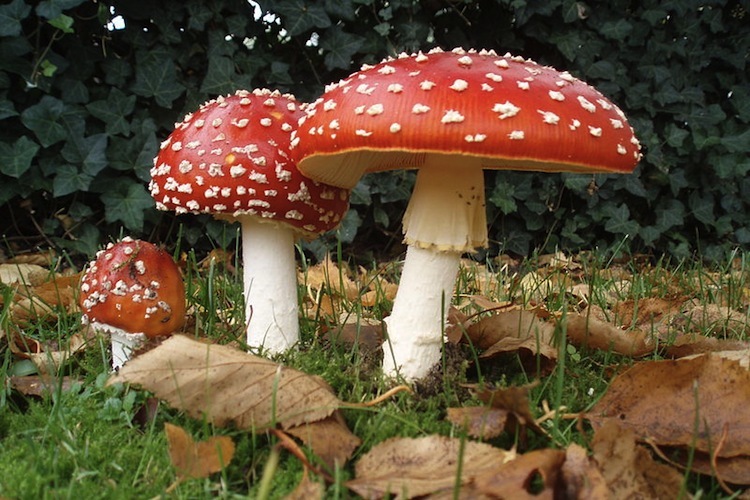|
Antiarin
Antiarins are cardiac glycoside poisons produced by the Antiaris toxicaria, upas tree (''Antiaris toxicaria''). There are two closely related forms, α-antiarin and β-antiarin. The two share the same aglycone, antiarigenin, but differ in the sugar group that is attached to it. α-Antiarin α-Antiarin is a crystalline solid with a melting point of 242-242.5 °C. The sugar portion of α-antiarin is antiarose (D-gulomethylose). In addition to being present in the sap of the upas tree, it is also found in the latex of ''Naucleopsis mello-barretoi''. β-Antiarin Is a crystalline solid with a melting point of 233-240 °C. The sugar portion of β-antiarin is rhamnose, L-rhamnose. The uses of β-antiarin range from medical use, such as hypertension treatment, to arrow poison application. It also proves to be more poisonous than curare, sporting a low of 0.1 mg/kg in most mammals. Symptoms of β-antiarin poisoning Upon β-antiarin poisoning, when observed in animals s ... [...More Info...] [...Related Items...] OR: [Wikipedia] [Google] [Baidu] |
Cardiac Glycoside
Cardiac glycosides are a class of organic compounds that increase the output force of the heart and decrease its rate of contractions by inhibiting the cellular sodium-potassium ATPase pump. Their beneficial medical uses include treatments for congestive heart failure and cardiac arrhythmias; however, their relative toxicity prevents them from being widely used. Most commonly found as defensive poisons in several plant genera such as ''Digitalis'' (the foxgloves) and '' Asclepias'' (the milkweeds), these compounds nevertheless have a diverse range of biochemical effects regarding cardiac cell function and have also been suggested for use in cancer treatment. Classification General structure The general structure of a cardiac glycoside consists of a steroid molecule attached to a sugar (glycoside) and an R group. The steroid nucleus consists of four fused rings to which other functional groups such as methyl, hydroxyl, and aldehyde groups can be attached to influence th ... [...More Info...] [...Related Items...] OR: [Wikipedia] [Google] [Baidu] |
Arrow Poison
Arrow poisons are used to poison arrow heads or darts for the purposes of hunting and warfare. They have been used by indigenous peoples worldwide and are still in use in areas of South America, Africa and Asia. Notable examples are the poisons secreted from the skin of the poison dart frog, and curare (or 'ampi'), a general term for a range of plant-derived arrow poisons used by the indigenous peoples of South America. History Poisoned arrows have featured in mythology, notably the Greek story of Heracles slaying the centaur Nessus using arrows poisoned with the blood of the Lernaean Hydra. The Greek hero Odysseus poisons his arrows with hellebore in Homer's ''Odyssey''. Poisoned arrows also figure in Homer's epic about the Trojan War, the ''Iliad'', in which both Achaeans and Trojans used toxic arrows and spears. Poisoned arrows were known to be used by many ancient civilizations, including the Gauls, Scythians, and Svans. Ancient Greek and Roman historians describe recipe ... [...More Info...] [...Related Items...] OR: [Wikipedia] [Google] [Baidu] |
Cardiac Glycosides
Cardiac glycosides are a class of organic compounds that increase the output force of the heart and decrease its rate of contractions by inhibiting the cellular sodium-potassium ATPase pump. Their beneficial medical uses include treatments for congestive heart failure and cardiac arrhythmias; however, their relative toxicity prevents them from being widely used. Most commonly found as defensive poisons in several plant genera such as ''Digitalis'' (the foxgloves) and ''Asclepias'' (the milkweeds), these compounds nevertheless have a diverse range of biochemical effects regarding cardiac cell function and have also been suggested for use in cancer treatment. Classification General structure The general structure of a cardiac glycoside consists of a steroid molecule attached to a sugar (glycoside) and an R group. The steroid nucleus consists of four fused rings to which other functional groups such as methyl, hydroxyl, and aldehyde groups can be attached to influence the ove ... [...More Info...] [...Related Items...] OR: [Wikipedia] [Google] [Baidu] |
Antiaris Toxicaria
''Antiaris'' is a genus in the mulberry and fig family Moraceae. It is a monotypic genus, i.e. it contains only one species, namely ''Antiaris toxicaria''. The genus was at one time considered to consist of several species, but is now regarded as just one variable species which can be further divided into five subspecies. One significant difference within the species is that the size of the fruit decreases as one travels from Africa to Polynesia. ''Antiaris'' has a remarkably wide distribution in tropical regions, occurring in Australia, tropical Asia, tropical Africa, Indonesia, the Philippines, Tonga, and various other tropical islands. Its seeds are spread by various birds and bats, and it is not clear how many of the populations are essentially invasive. The species is of interest as a source of wood, bark cloth, and pharmacological or toxic substances. Naming and etymology The generic epithet ''Antiaris'' is derived directly from the Javanese name for it: ''ancar''Heyne, K. ... [...More Info...] [...Related Items...] OR: [Wikipedia] [Google] [Baidu] |
Chemical Abstracts Service
Chemical Abstracts Service (CAS) is a division of the American Chemical Society. It is a source of chemical information and is located in Columbus, Ohio, United States. Print periodicals ''Chemical Abstracts'' is a periodical index that provides numerous tools such as SciFinder as well as tagged keywords, summaries, indexes of disclosures, and structures of compounds in recently published scientific documents. Approximately 8,000 academic journal, journals, technical reports, dissertations, conference proceedings, and new books, available in at least 50 different languages, are monitored yearly, as are patent specifications from 27 countries and two international organizations. ''Chemical Abstracts'' ceased print publication on January 1, 2010. Databases The two principal databases that support the different products are CAplus and Registry. CAS References CAS References consists of bibliographic information and abstracts for all articles in chemical journals worldwide, and ch ... [...More Info...] [...Related Items...] OR: [Wikipedia] [Google] [Baidu] |
Aldehydes
In organic chemistry, an aldehyde () (lat. ''al''cohol ''dehyd''rogenatum, dehydrogenated alcohol) is an organic compound containing a functional group with the structure . The functional group itself (without the "R" side chain) can be referred to as an aldehyde but can also be classified as a formyl group. Aldehydes are a common motif in many chemicals important in technology and biology. Structure and bonding Aldehyde molecules have a central carbon atom that is connected by a double bond to oxygen, a single bond to hydrogen and another single bond to a third substituent, which is carbon or, in the case of formaldehyde, hydrogen. The central carbon is often described as being sp2- hybridized. The aldehyde group is somewhat polar. The bond length is about 120–122 picometers. Physical properties and characterization Aldehydes have properties that are diverse and that depend on the remainder of the molecule. Smaller aldehydes such as formaldehyde and acetaldehyde are soluble ... [...More Info...] [...Related Items...] OR: [Wikipedia] [Google] [Baidu] |
Helvetica Chimica Acta
''Helvetica Chimica Acta'' is a peer-reviewed scientific journal of chemistry established by the Swiss Chemical Society. It is published online by John Wiley & Sons. The journal has a 2023 impact factor of 1.5. History *August 6, 1901: Founding of the Swiss Chemical Society *1911: IUPAC refused SCG as a member, no own journal *September 11, 1917: SCG founded HCA *1917–1948: First editor-in-chief An editor-in-chief (EIC), also known as lead editor or chief editor, is a publication's editorial leader who has final responsibility for its operations and policies. The editor-in-chief heads all departments of the organization and is held accoun ...: Friedrich Fichter (1869–1952) *Spring 1918: Fasciculus I of Volume I of HCA was issued *1948–1971: Emile Cherbuliez (1891–1985) *1970: English allowed as fourth language *1971–1983: Edgardo Giovannini (1909–2004) *1983–2015: M. Volkan Kisakürek *2015-2016: Richard J. Smith *2016–2021: Jeffrey W. Bode and Christophe Copére ... [...More Info...] [...Related Items...] OR: [Wikipedia] [Google] [Baidu] |
Plant Toxins
A toxin is a naturally occurring poison produced by metabolic activities of living cells or organisms. They occur especially as proteins, often conjugated. The term was first used by organic chemist Ludwig Brieger (1849–1919), derived from '' toxic''. Toxins can be small molecules, peptides, or proteins that are capable of causing disease on contact with or absorption by body tissues interacting with biological macromolecules such as enzymes or cellular receptors. They vary greatly in their toxicity, ranging from usually minor (such as a bee sting) to potentially fatal even at extremely low doses (such as botulinum toxin). Terminology Toxins are often distinguished from other chemical agents strictly based on their biological origin. Less strict understandings embrace naturally occurring inorganic toxins, such as arsenic. Other understandings embrace synthetic analogs of naturally occurring organic poisons as toxins, and may or may not embrace naturally oc ... [...More Info...] [...Related Items...] OR: [Wikipedia] [Google] [Baidu] |
Strychnos
''Strychnos'' is a genus of flowering plants, belonging to the family Loganiaceae (sometimes Strychnaceae). The genus includes about 200 accepted species of trees and lianas. The genus is widely distributed around the world's tropics and is noted for the presence of poisonous indole alkaloids in the roots, stems and leaves of various species. Among these alkaloids are the well-known and virulent poisons strychnine and curare. Etymology The name ''strychnos'' was applied by Pliny the Elder in his ''Natural History'' to ''Solanum nigrum''. The word is derived from the Ancient Greek στρύχνον (''strúkhnon'') – "acrid", "bitter". The meaning of the word ''strychnos'' was not fixed in Ancient Greece, where it could designate a variety of different plants having in common the property of toxicity. Distribution The genus has a pantropical distribution. Taxonomy The genus is divided into 12 sections, though it is conceded that the sections do not reflect evolution of th ... [...More Info...] [...Related Items...] OR: [Wikipedia] [Google] [Baidu] |




